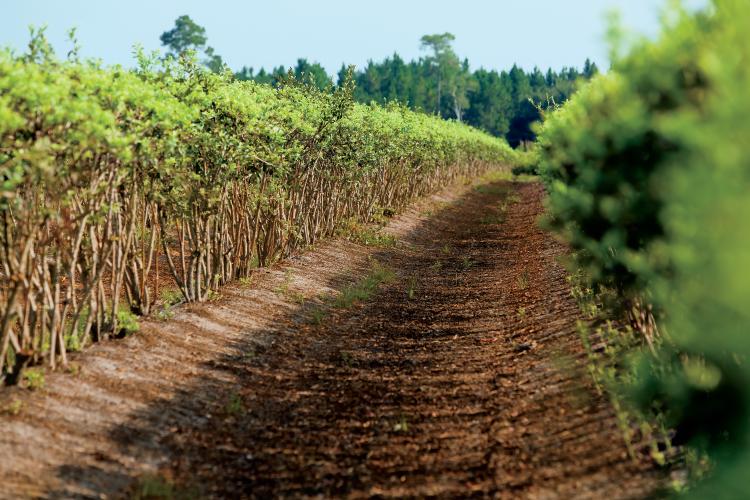Home > Georgia > Georgia Crops & Livestock > Blueberry Research Bears Fruit
Blueberry Research Bears Fruit

In the 35 years since Danny Stanaland came to Southeast Georgia, the acreage of blueberries grown in the state has increased from 150 to nearly 22,000. It’s a blueberry bounty that has made a significant economic impact on the agricultural community in the state. But according to Stanaland, a former Bacon County Extension coordinator and now a University of Georgia blueberry agent, the growing number of acres also increases the number of challenges facing the farmer.
Assessing and addressing those challenges means “being on the cutting edge of research, so that the farmers can be successful and can make a profit,” says Stanaland.
That’s where the Blueberry Research and Demonstration Farm in Alma comes in. The 17-acre farm includes Highbush blueberries in rows and beds and young and old RabbitEye bushes. “Our goal is to mimic what farmers in the area plant, so that the research is directly applicable to their operation,” says Stanaland. “We conduct pruning studies. We evaluate insecticides to see which give the best control and what timing is most effective. We put in test plots to see what chemicals might provide potential relief from different diseases. It’s also important for us to plant the new varieties being developed. That way we can see how they grow, when they bloom, how they set fruit and the quality of that fruit. We encourage farmers to come by and see these new plants so they can decide if they want to grow them.”
According to Joe Cornelius, president of J & B Blueberry Farms in Manor, such research in breeding and production keeps Georgia farmers at the forefront of the industry. “It used to take four to five years from planting the bush to bearing fruit,” says Cornelius. “But new fertilizing and pruning techniques developed through research have shortened that to just two to three years now.”
Advances in plant breeding are also paying dividends. The development of the Southern Highbush variety, for instance, provides growers with a plant that can be harvested in April and May instead of the traditional harvest period of RabbitEye in June and July. Not only does that extend the season, the early harvest also means higher prices for the farmer who has berries to sell when the fruit is in short supply.
Other initiatives include alternatives to hand harvesting, which is expensive and time consuming. That can come in the form of mechanical advances or breeding breakthroughs, which produce varieties with thicker skins that don’t require hand picking.
Stanaland also credits the work of several Georgia experts in breeding, plant pathology and entomology for the many advances made over the past decade and expects that expertise to continue to benefit the state’s blueberry farmers in the years to come. “Such efforts allow us to be prepared to offer the farmer useful advice for growing their blueberries each year.”



